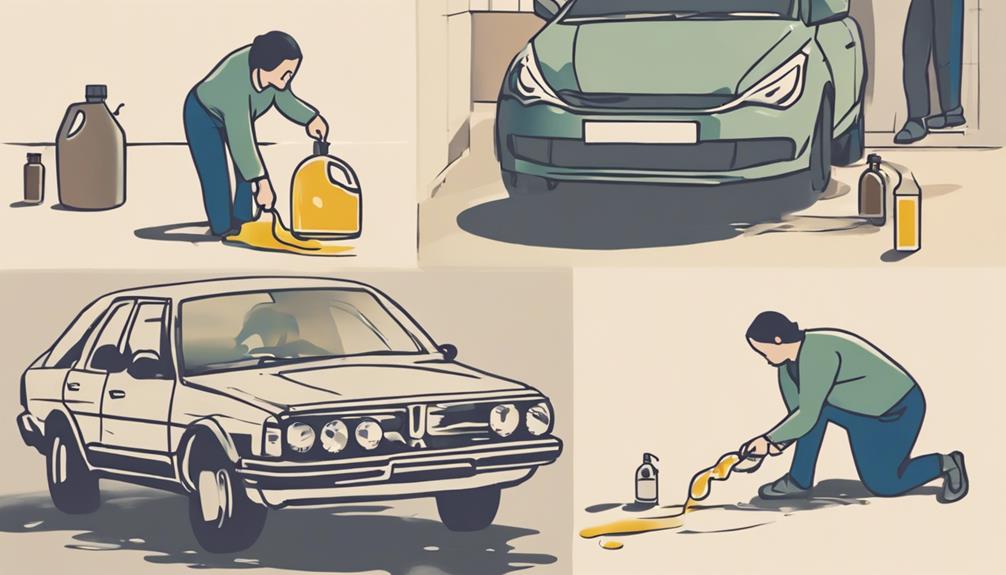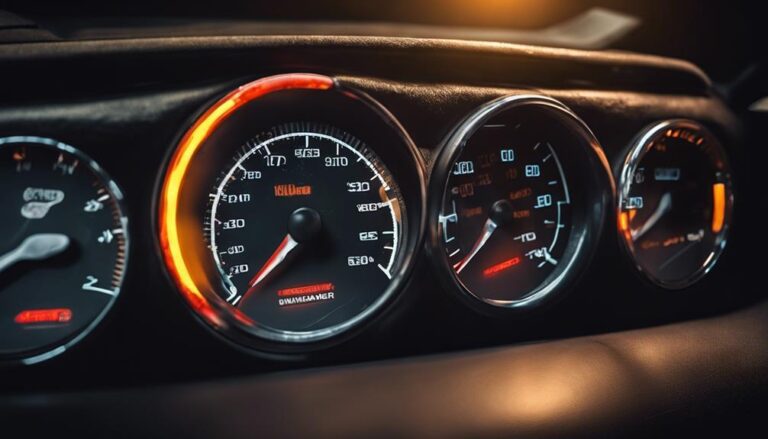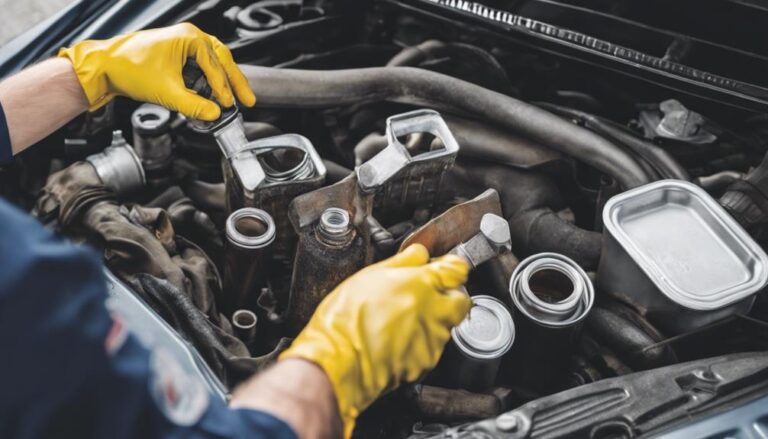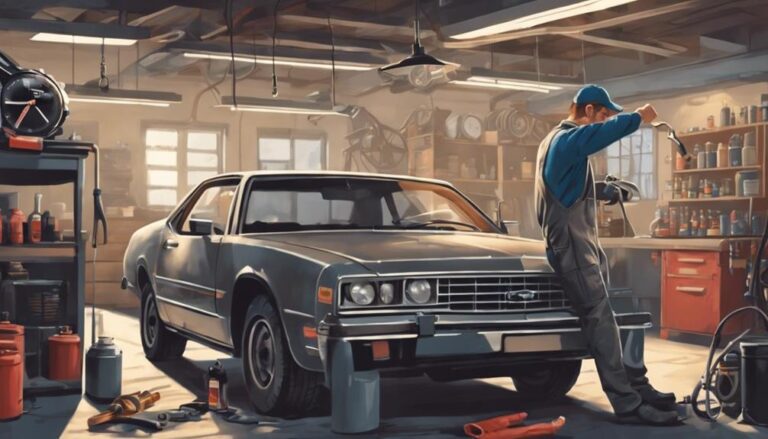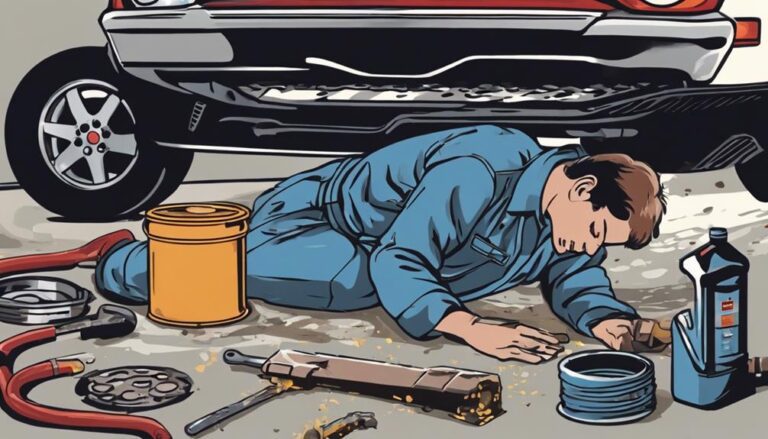What Are the Common Oil Change Mistakes?
You might be surprised by how often people make mistakes when changing their oil. From using the wrong type of oil to neglecting crucial components like the oil filter and O-ring, there are several pitfalls to avoid.
These errors can have serious consequences for your engine's health and performance. But fear not, by paying attention to key details and following a few simple steps, you can ensure that your oil changes are done correctly, prolonging the life of your engine.
Key Takeaways
- Inadequate engine warm-up can lead to incomplete oil drainage and potential engine damage.
- Improper tightening of drain plug and oil filter can result in leaks and damage.
- Incorrect oil quantity can cause poor lubrication, foaming, and gasket problems.
- Incorrect torque application during reassembly can lead to leaks, stripped threads, or engine failure.
Preparation Errors
Lack of proper preparation often leads to unnecessary delays and frustration during the oil change process. Tool organization plays a crucial role in ensuring a smooth and efficient oil change. Before starting, make sure all the necessary tools, such as wrenches, oil filter wrenches, and drain pans, are easily accessible. Proper tool organization not only saves time but also prevents interruptions during the process.
Additionally, safety precautions mustn't be overlooked. Safety should always be a top priority when performing an oil change. Make sure to wear protective gear, such as gloves and safety glasses, to prevent any accidents or injuries. Ensuring a clean and well-lit workspace is also essential for a safe oil change environment.
Engine Warm-up Oversight
Proper engine warm-up is essential for facilitating efficient oil drainage during the oil change process. When you overlook engine warm-up, you risk incomplete oil drainage and potential engine damage. Here's how to avoid this oversight:
- Temperature Monitoring: Keep an eye on the temperature gauge and wait until the engine reaches the optimal operating temperature before starting the oil change process.
- Timing Accuracy: Allow the engine to warm up for 5-10 minutes. This duration ensures that the oil becomes less viscous, aiding in a smoother and quicker draining process.
- Optimal Oil Flow: A properly warmed-up engine promotes optimal oil flow, allowing for a more thorough oil change and reducing the chances of leaving residual oil behind.
- Preventing Engine Damage: Ensuring the engine is adequately warmed up before draining the oil helps prevent potential damage and guarantees a successful oil change process.
Drain Plug and Filter Issues
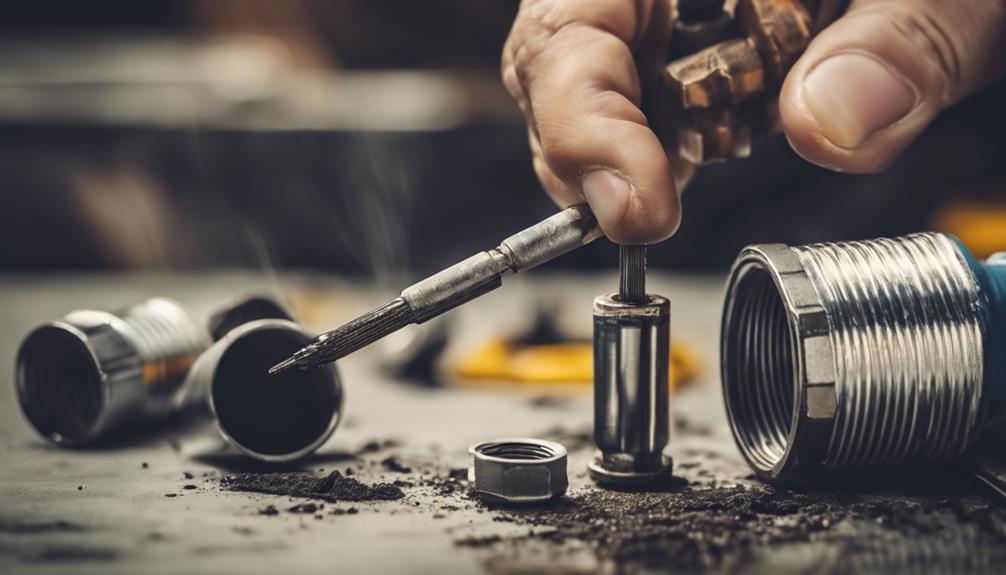
Addressing Drain Plug and Filter Maintenance is crucial for preventing potential oil leaks and engine damage during oil changes. Improper tightening of the drain plug can lead to leaks and even result in severe engine damage. Always ensure the drain plug is securely tightened to the manufacturer's specifications using a torque wrench.
Additionally, when changing the oil, it's essential to replace the crush washer with a new one. Reusing an old crush washer can lead to leaks around the drain plug due to the compromised seal.
Another critical aspect is checking the oil filter gasket before installation. A damaged or improperly seated gasket can cause oil leaks and filter malfunction. Make sure to lubricate the new oil filter gasket before installation to ensure proper sealing and prevent leaks.
Furthermore, avoid over-tightening the oil filter, as this can damage the seal, leading to leaks and making it challenging to remove during the next oil change. By paying attention to these details, you can ensure a smooth oil change process and prevent potential issues down the road.
Oil Quantity Mistakes
Ensuring the correct amount of oil is essential to prevent engine damage and maintain optimal performance. When it comes to oil quantity during an oil change, improper measurements can lead to significant issues.
- Adding too little oil: Inadequate oil levels can result in poor lubrication, leading to increased friction between moving parts and potential engine damage.
- Overfilling with oil: Exceeding the recommended oil capacity can cause foaming, reduced hydraulic pressure, and even leaks, impacting the overall performance of the engine.
- Incorrect oil quantity: Using the wrong amount of oil can create gasket and seal problems, affecting the engine's efficiency and longevity.
- Checking oil levels: Always verify the oil level after an oil change to ensure the correct amount was added, addressing any lubrication concerns promptly.
Oversight in Reassembly
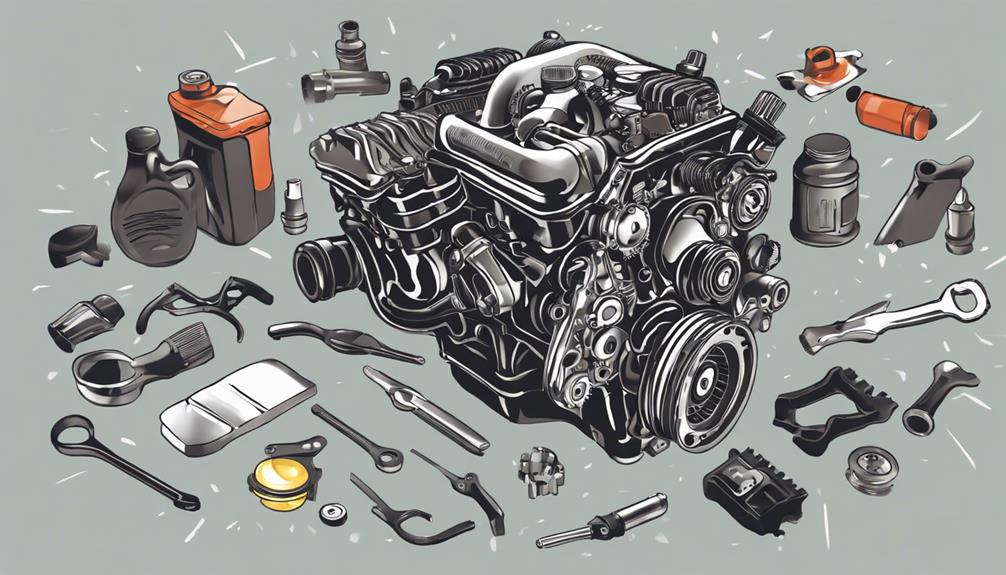
To prevent oil leaks and engine damage, meticulous attention to detail during the reassembly process after an oil change is crucial. When reinstalling components such as the drain plug and oil filter, it's essential to follow proper sealant application procedures. Applying sealant to the drain plug threads or oil filter gasket can help ensure a tight, leak-free seal.
Moreover, adhering to the specified torque specifications is paramount. Over-tightening the drain plug or oil filter can lead to stripped threads, causing significant damage to engine components. Conversely, under-tightening these components can result in oil leaks and potential engine failure.
Before reassembling, always check for the proper placement and alignment of parts. For instance, forgetting to reinstall the drain plug or not tightening the oil filter securely can lead to oil leaks and subsequent engine damage. Paying close attention to these details can help maintain the integrity of your engine and prevent costly repairs down the line.
Frequently Asked Questions
What Not to Do When Changing Oil?
When changing oil, ensure proper draining technique for a secure seal. Place the oil filter correctly for optimal function. Follow these steps to avoid leaks and engine damage. Prioritize these actions for a successful oil change.
How Do You Know if You Did an Oil Change Right?
If you did an oil change right, you'll notice smooth engine operation, proper oil viscosity, and correct filter installation. Check the oil level, ensure a healthy engine condition, and watch for leaks. Trust your instincts and seek help when needed.
Is It Easy to Mess up an Oil Change?
Messing up an oil change is easy if you rush or skip steps. Remember to use protective gear, dispose of oil properly, and follow each step precisely. Taking shortcuts can lead to leaks, engine damage, or messy clean-ups.
What Three Things Should You Check at Every Oil Change?
At every oil change, you should check oil quality, filter condition, and fluid levels. Ensure the filter is properly sealed, the correct oil quantity is added, and the drain plug is securely tightened to prevent leaks.
Conclusion
In conclusion, avoiding common oil change mistakes is essential for maintaining engine health and performance. Remember to use the correct oil viscosity, replace filters and gaskets, and ensure all components are securely installed.
By following proper procedures, you can prevent engine damage and leaks. So, ask yourself: Are you ready to take the necessary steps to protect your engine and keep it running smoothly?

